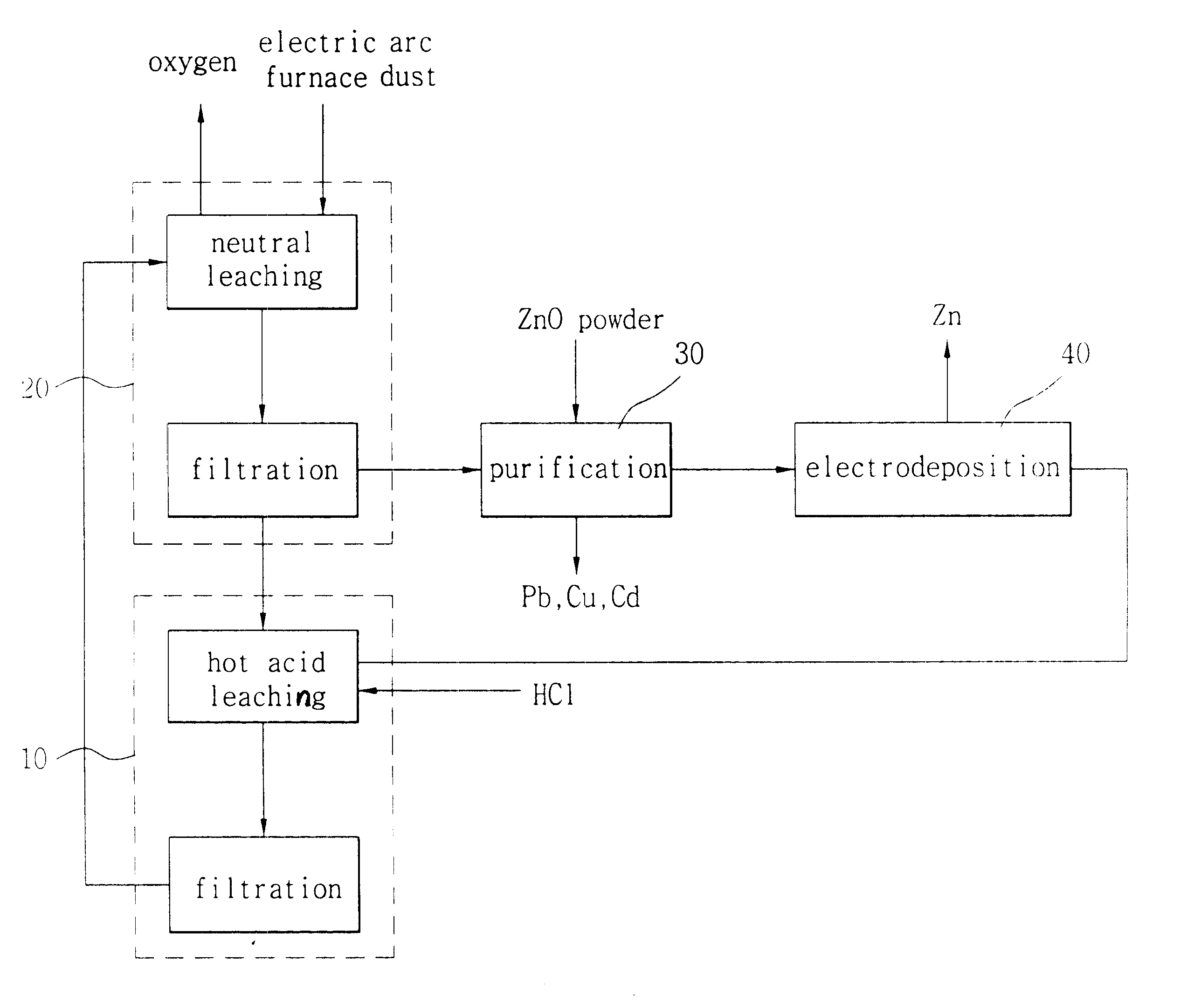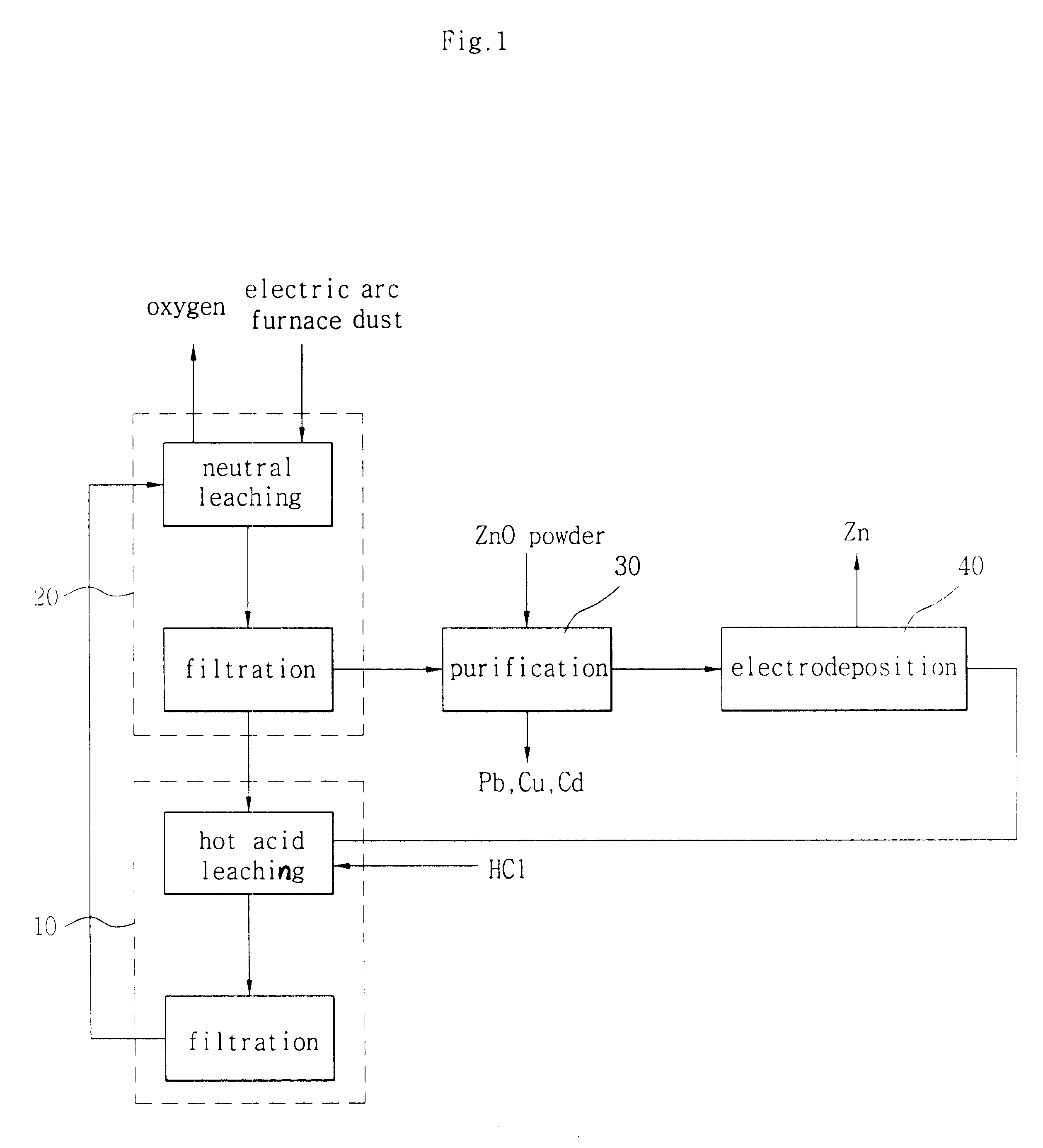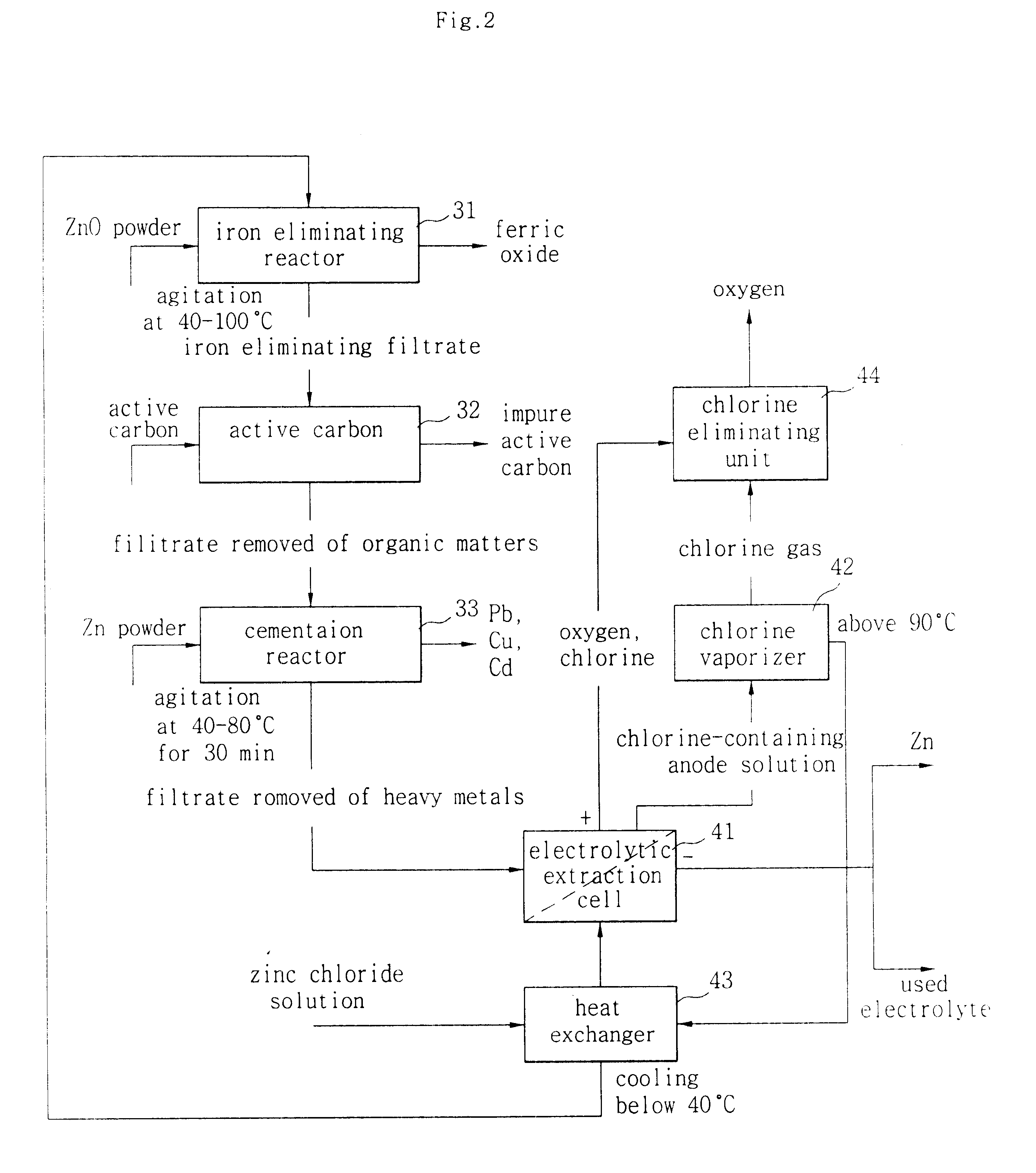Hydrometallurgical method for recovery of zinc from electric arc furnace dust
- Summary
- Abstract
- Description
- Claims
- Application Information
AI Technical Summary
Benefits of technology
Problems solved by technology
Method used
Image
Examples
example
Table 1-Table 4 illustrate the performance of the present invention in benchscale tests on two types of electric arc furnace dusts analysed as shown in Table 1.
Table 2 depicts the mass balance of the leaching and purification to make electrolyte solution in case of using EAFD-1 that doesn't have any burnt organic. In convenience, the test started from hot acid leaching stage.
The resulting solution has zinc concentration suitable for the electrowinning. Another test for EAFD-2 containing organic needed activated carbon treatment. Table 3 shows the effect of the purification method by activated carbon.
From the results shown in the Table 3, it is found that Mn and Zn are not affected by activated carbon treatment while Pb and Cu decrease their concentrations. With cementation only, Pb could not be removed below 100 ppm because the metal-organic complex cannot be separated by ion exchange. Perfect purification was achieved in case of using both of two methods.
Table 4 shows the electrowi...
PUM
| Property | Measurement | Unit |
|---|---|---|
| Temperature | aaaaa | aaaaa |
| Fraction | aaaaa | aaaaa |
| Force | aaaaa | aaaaa |
Abstract
Description
Claims
Application Information
 Login to View More
Login to View More - R&D
- Intellectual Property
- Life Sciences
- Materials
- Tech Scout
- Unparalleled Data Quality
- Higher Quality Content
- 60% Fewer Hallucinations
Browse by: Latest US Patents, China's latest patents, Technical Efficacy Thesaurus, Application Domain, Technology Topic, Popular Technical Reports.
© 2025 PatSnap. All rights reserved.Legal|Privacy policy|Modern Slavery Act Transparency Statement|Sitemap|About US| Contact US: help@patsnap.com



